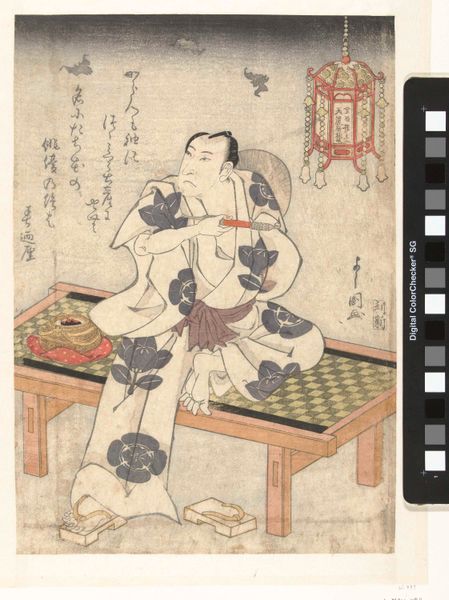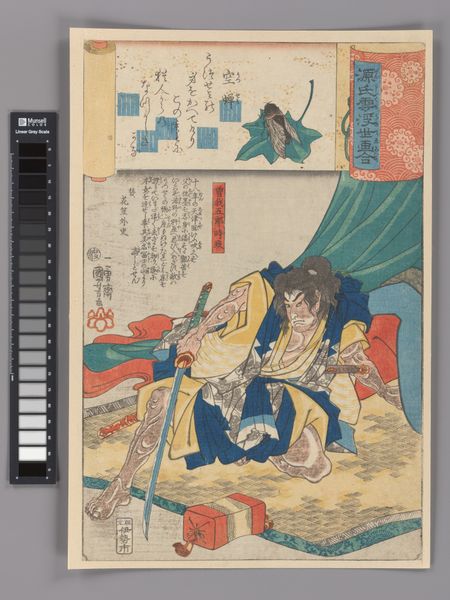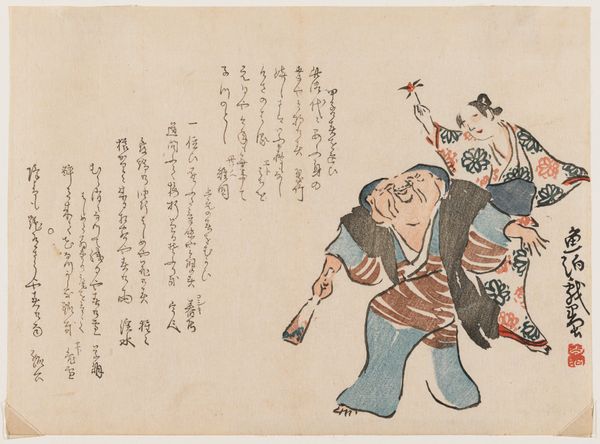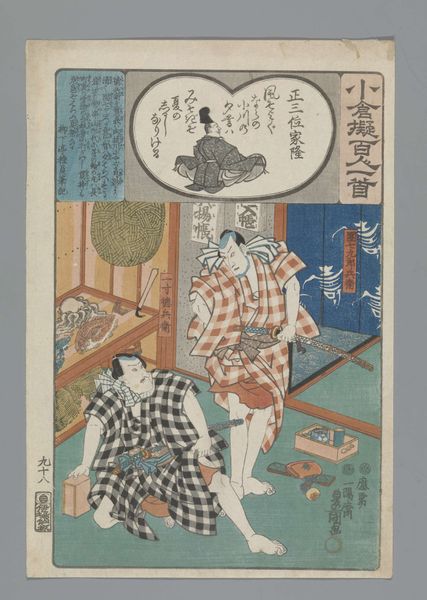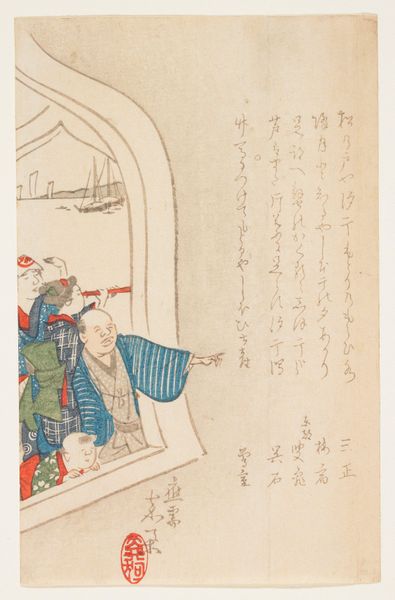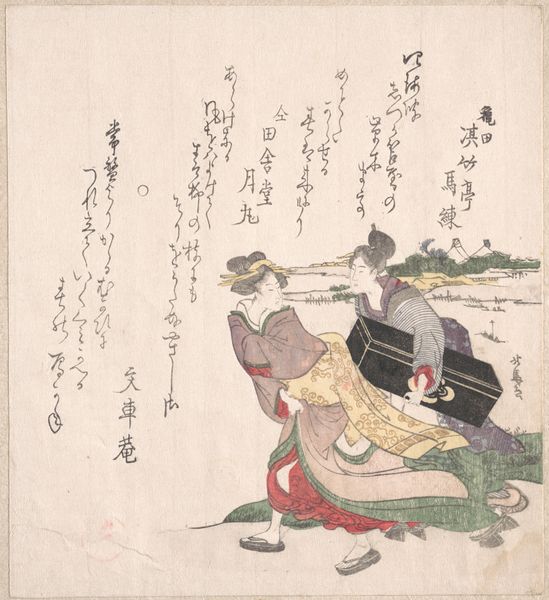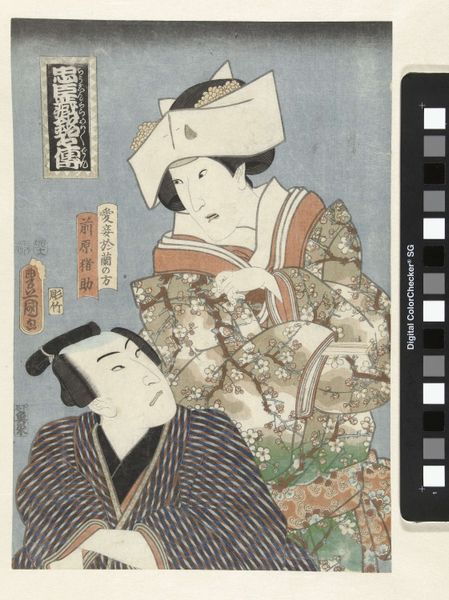
print, woodblock-print
#
portrait
# print
#
asian-art
#
ukiyo-e
#
woodblock-print
#
genre-painting
Dimensions: height 375 mm, width 249 mm
Copyright: Rijks Museum: Open Domain
Curator: Standing before us is “Two Actors,” a woodblock print crafted sometime between 1828 and 1830 by Shunkōsai Hokushū. Isn't it a striking glimpse into Edo-period theater? Editor: That's putting it mildly. What a wonderfully bizarre and slightly tragic tableau! The fellow on the left, half-undressed and clearly distressed, with the other guy trying to give him an empty bowl. It feels loaded with emotion. Curator: Absolutely. Hokushū, like many Ukiyo-e artists, captured fleeting moments from everyday life and, importantly, the vibrant world of Kabuki theater. It’s as if he has stopped time, mid-performance, to invite us into their world. Editor: I see so many symbols, perhaps the bowl relates to generosity or sacrifice... It could indicate an ending. Is there maybe even commentary here about fame or the precariousness of an actor's life—a fall from grace visualized through those garments falling away? Curator: It's compelling how you pick up those symbolic echoes. Ukiyo-e prints often played with visual puns and subtle messaging beyond the surface. This print might indeed offer commentary on the actor's social standing or perhaps hints about the specific play they’re performing in. Editor: Right, think about that box to the right of the one actor… It also hints to what those two characters have to act; those Japanese sign are saying Udon in Hiragana writing… Maybe this performance happened during breaktime! I'm captivated by how the patterns on their robes—all these checks—seem to ripple outwards like an emotional wave. Even in their stillness, the artist imbues so much movement. Curator: Hokushū's skill with the woodblock technique—the precision of line, the controlled palette—it’s magnificent! What do you think it evokes for a modern audience here at the Rijksmuseum? Editor: It whispers stories of a world long past but reminds us that drama and human expression remain timeless. This print doesn't just depict actors; it embodies the theater's enduring ability to hold a mirror up to our anxieties, ambitions and vulnerabilities, like what we can see with that simple and powerful print work. Curator: Precisely, and it serves to demonstrate art's incredible ability to transcend both time and space, no? Thank you.
Comments
No comments
Be the first to comment and join the conversation on the ultimate creative platform.
